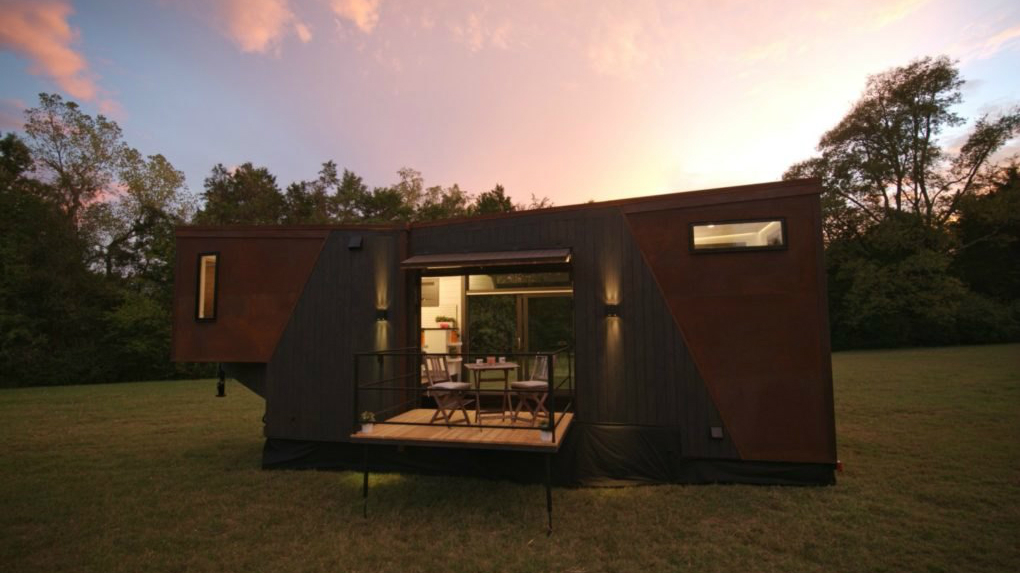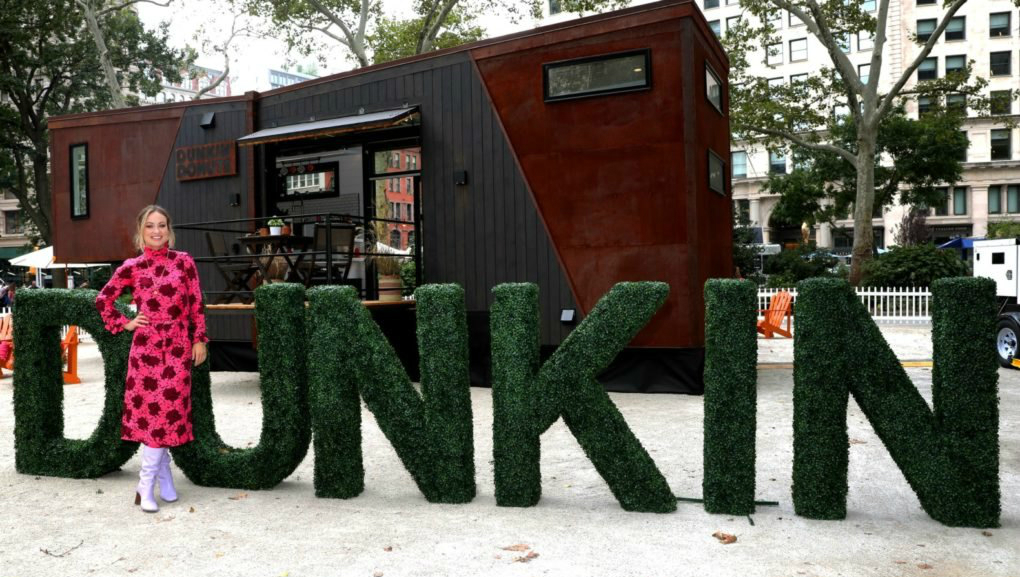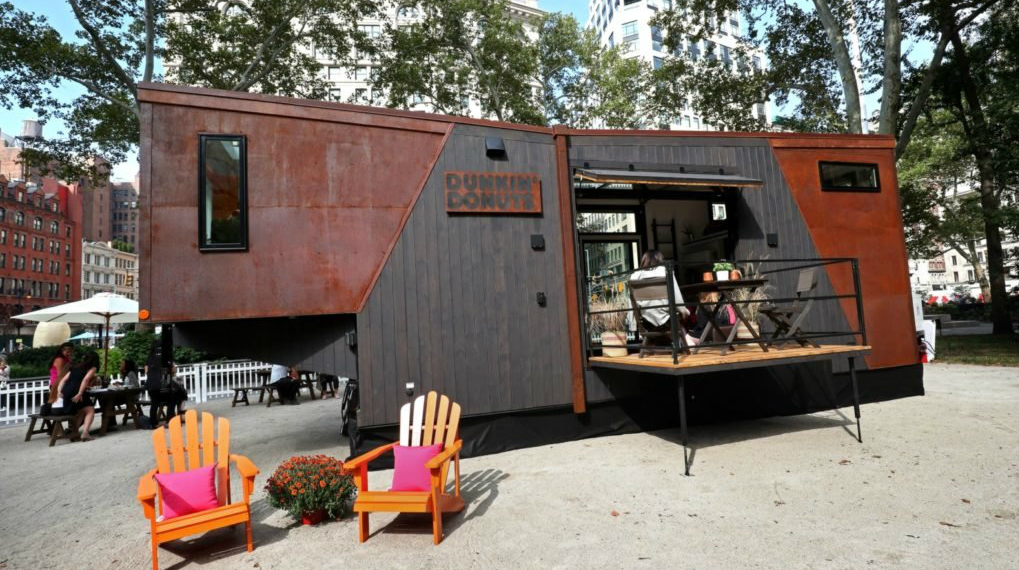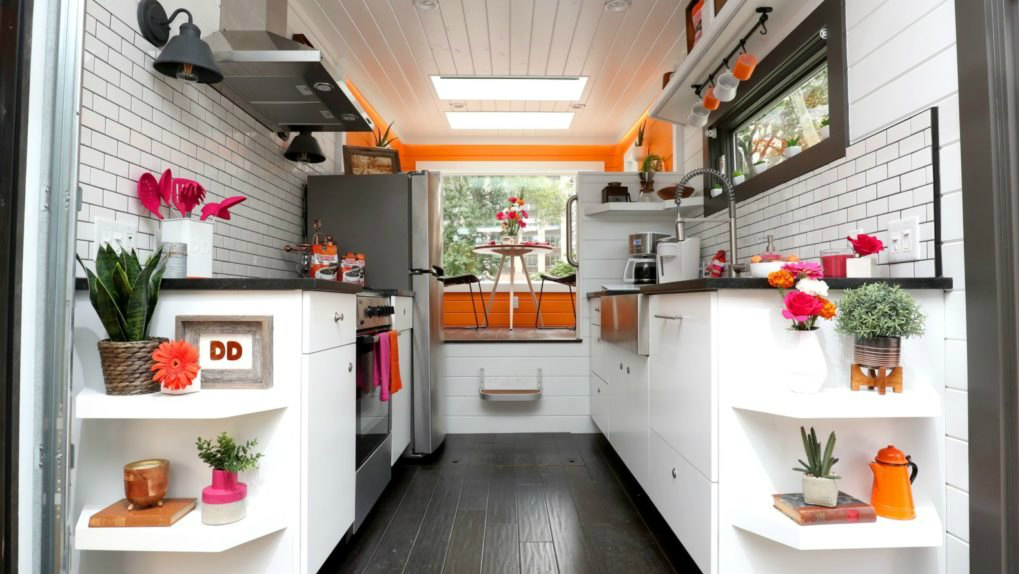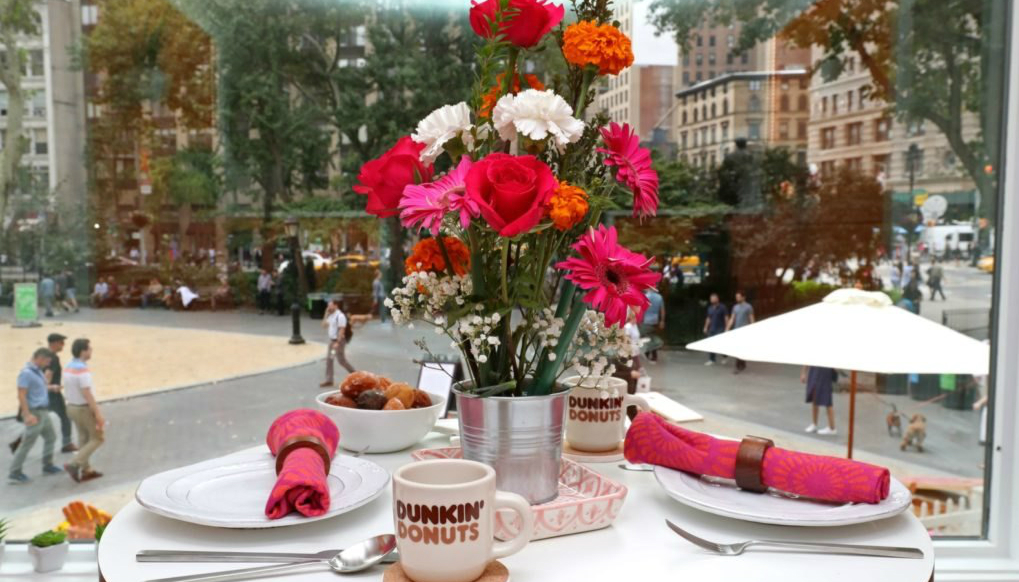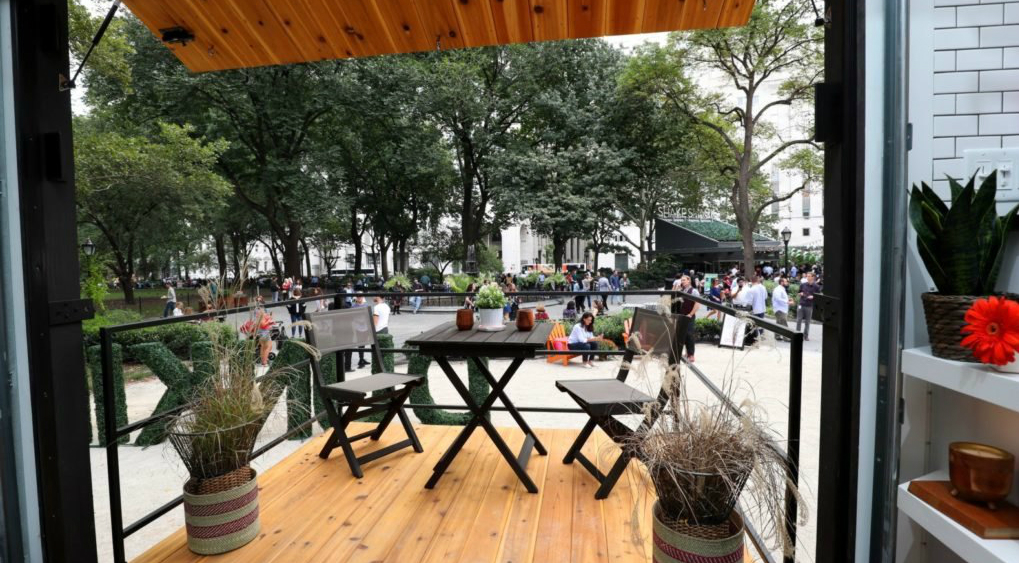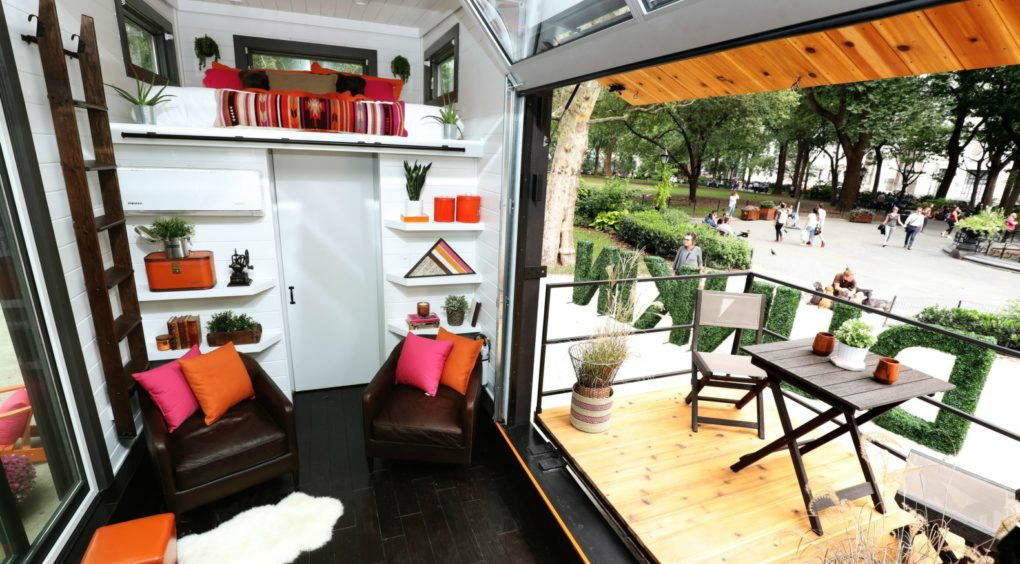Think twice before you throw out your coffee grounds. Dunkin’, formerly Dunkin’ Donuts, partnered with a biofuel company, a tiny home manufacturer, and actress and interior designer Olivia Wilde to create the Home That Runs on Dunkin’. Dunkin’ held the big reveal at Madison Square Park in New York City, Inhabit reported.
Blue Marble Biomaterials helped Dunkin’ create coffee-based fuel in a three-step process, using 65,000 pounds of recycled grounds. After extraction, the excess oils are mixed with alcohol to form biodiesel and then washed and refined. The refined oils comprise 80 percent of the fuel that powers the Dunkin’ tiny home.
If you have a mind to try this process at home, consider that each gallon of Dunkin’ biofuel required 170 pounds of coffee grounds. So start drinking.
According to Dunkin’, the amount of natural oils leftover after brewing coffee depends on both the coffee bean type and the way the beans were originally processed. The processing regimen employed by Blue Marble also produced glycerin as a byproduct, which could potentially be used as a skin moisturizer.
Dunkin’ partnered with New Frontier Tiny Home to build the 275-square foot home on a trailer chassis. Built from reclaimed material, the home’s exterior is a combination of dark-stained cedar intended to look like a cup of black coffee and corten steel panels with a rough, rusty surface that resembles spent coffee grounds.
Wilde’s design aesthetic directed the Home That Runs on Dunkin’s interior, though a glance at the images below shows she didn’t stray from the coffeemaker’s traditional colors.
The tiny home’s interior features a chef’s kitchen with slate countertops, subway tile backsplashes, and solid walnut floors. The kitchen has a farmhouse sink and high-end appliances.
Additional interior accommodations in the Dunkin’ home feature a king-size bed and a full-size bathroom that includes a spa tub and a washer dryer. The living room and coffee nook are designed for two people.
There’s also a partially-covered, open-air, full-size cedar porch made from a garage door with added protective fencing that drops down from what, based on the towing end, would be the port side if the tiny home were a boat.
For more views of the Home That Runs on Dunkin’, check out the 360-degree views below.
Editors' Recommendations
- Segway expands its smart home footprint with robot lawn mowers at CES 2024
- Echo Pop vs. HomePod (Gen 2): is the HomePod worth its added cost?
- Google partners with ADT to launch new smart home security system
- Google Home’s web preview is live — and it’s missing most features
- Big smart home growth predicted: These are the appliances and features we’d like to see
